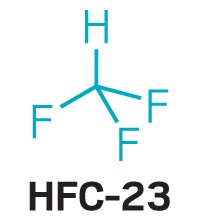Advertisement
Grab your lab coat. Let's get started
Welcome!
Welcome!
Create an account below to get 6 C&EN articles per month, receive newsletters and more - all free.
It seems this is your first time logging in online. Please enter the following information to continue.
As an ACS member you automatically get access to this site. All we need is few more details to create your reading experience.
Not you? Sign in with a different account.
Not you? Sign in with a different account.
ERROR 1
ERROR 1
ERROR 2
ERROR 2
ERROR 2
ERROR 2
ERROR 2
Password and Confirm password must match.
If you have an ACS member number, please enter it here so we can link this account to your membership. (optional)
ERROR 2
ACS values your privacy. By submitting your information, you are gaining access to C&EN and subscribing to our weekly newsletter. We use the information you provide to make your reading experience better, and we will never sell your data to third party members.
Environment
Countries Propose Cuts In HFC Use
by Cheryl Hogue
May 17, 2010
| A version of this story appeared in
Volume 88, Issue 20
Canada, Mexico, and the U.S. are formally proposing to curb production and use of a family of potent greenhouse gases under the Montreal protocol, a treaty to safeguard Earth’s protective stratospheric ozone layer. The three countries want the world to ratchet down releases of hydrofluorocarbons, which are refrigerant chemicals that have largely replaced ozone-depleting substances such as chlorofluorocarbons. On an equal-mass basis, HFCs, used in refrigerators and car air conditioners, have the potential to warm the atmosphere tens to thousands of times more than carbon dioxide. Global atmospheric concentrations of these synthetic chemicals are increasing. The three North American countries are proposing an amendment to the Montreal protocol that would extend the treaty to cover HFCs. “Without this proposal, HFC use in developing countries is anticipated to grow substantially,” because of growing demand for refrigeration and air conditioning, according to EPA. The proposal will be discussed by the 196 countries that are partners in the Montreal protocol at meetings in June and November. More information on the plan is available at www.epa.gov/ozone/intpol/mpagreement.html.




Join the conversation
Contact the reporter
Submit a Letter to the Editor for publication
Engage with us on Twitter